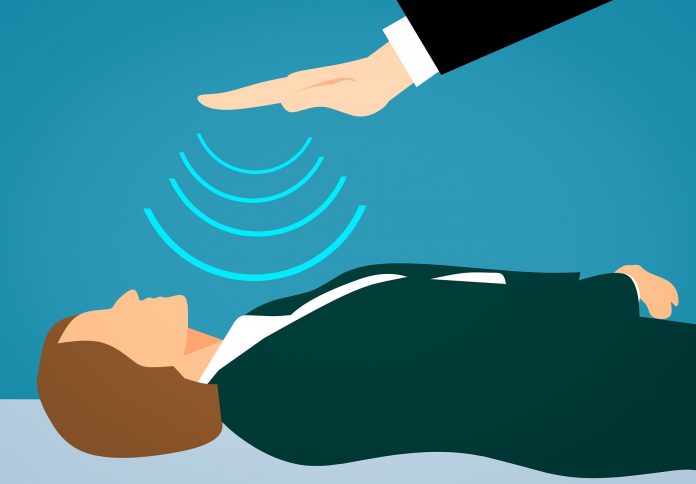We come across people who make us feel energized and happy, and others make us feel tired or lethargic. One might wonder how come people have anything to do with how we feel or why our energies are getting low. We believe that every human has a positive or negative aura that affects their personality and affects their met. Stating the classic law of energy conservation says that energy can only be transferred, created, or destroyed. Touch therapy uses that to bring about a positive impact.
Each of us carries personal energy feel around us, commonly known as aura. Some people give us positive vibes and we wish to see them again. Sometimes we wish to avoid certain people based on our experiences from the first meeting. Studies say that aura extends out the form of our physical body and spread up to three feet outside our body, meaning that it can affect those around us. When we feel sick, we rush to a doctor or mental health professional. Still, sometimes we need healings on spiritual levels. We know people opt for reiki, energy healing, or touch therapy to re-center their energies and aura.
Energy healing therapies have been helping people for decades. These approaches operate around the energies that we carry in and around our bodies and affect our health and well-being. Touch therapy is one of the energy healing therapies. Let us dig into more facts about touch therapy.
What is touch therapy?
The energy healing theory states that our body has natural energy fields that connect our mind and body. Depending on the energy flow through our body, we can either enjoy good health or feel low. If the energy is flowing smoothly through our bodies, it will positively impact our health. Touch therapy involves practitioners using their hands to manipulate and redirect the energy flow through our bodies. People often confuse touch therapy with other kinds of healing therapies. Commonly referred to as healing touch or therapeutic touch, touch therapy has different meanings for people. The therapeutic touch concept was introduced in the 1970s, and a decade later, healing touch was making rounds among people. Both therapies concern the energy center of our body. A practitioner may not touch your body but hold their hands a few inches above your body to transfer or redirect the energy. Touch therapy or TT promotes healing through restoring a person’s energy field and its harmony. This therapy is easy to use in any setting, and many practitioners use it in hospice care.
HOW IS TOUCH THERAPY DONE
Touch therapy is more about manipulating or redirecting the energy. A practitioner may or may not touch their client. Most of the time, they hold their hands a few inches above the patient’s body. Upon your first appointment, the practitioner will collect information or history about any symptoms you have recently noticed or for how long you have experienced them. Touch therapy involves these four steps.
Centering
Before beginning the session, a practitioner performs a centering process that involves the practitioner being calm and centered before tapping into your energy field. Centering helps the practitioner clear their mind of any distracting thoughts to focus on the patient’s energy center or biofield.
Assessment
Once your practitioner has completed their centering, they will assess the patient’s energy by holding their hands a few inches above the body and sweeping them over your body from head to toe. This process allows the practitioner to feel the energy flowing through your body and get a sense of your biofield. The areas where energy is blocked appear tingly, warm, or cold during the assessment.
Intervention
After finding the areas with energy blockage, the practitioner then applies techniques to uplift the energy barrier. For example, intervention may involve rhythmic hand movements over the area representing the energy block. They also check with the patient during the session to see if the symptoms improve and perform an unruffling process until they no longer feel any blockage.
Evaluation
Once the practitioner has uplifted the energy block, you will feel sensations like brief emotional overwhelm, lightheadedness, and thirst. In case you experience any unpleasant symptoms, inform your therapist.
The Benefits Of Touch Therapy
According to practitioners, touch therapy is beneficial in treating pain, depression, anxiety. It restores the body’s ability to heal itself—people suffering from chronic diseases like cancer experience constant pain and discomfort resulting from their treatments. Touch therapy can help them cope with the pain they are experiencing. The therapy does not treat or eliminate cancer itself. Still, it alleviates the pain and relieves the feeling of discomfort for many patients. People also use touch therapy for the following reasons.
- Relieve stress and anxiety- when a person experiences stress or anxiety, they feel a change in their energies, and stepping out of bed may seem challenging to them
- Promote faster wound healing: If you have a wound that seems to take a lot of time in recovery, it might be due to an energy block at the wound area, hindering its healing.
- Pain reduction: It can be any sort of chronic pain that usual medicines have failed to treat. Sometimes the pain we feel often results from a disturbance in our energy centers.
- Boosting immune system’s function
- Improving symptoms resulting from chronic conditions like fibromyalgia or lupus
- Improve sleep cycle and reduce fatigue- our energy center regulates our sleep and the way we feel. People who feel tired after a bit of effort or feel low for most of their days can benefit from touch therapy to improve their symptoms.
Also read about: 5 Neurohacking Techniques to Implement That Are Life-Changing
How long does it take to show positive results?
The results of your touch therapy depend on the intensity of symptoms that you are seeking to improve. An average session lasts for about 20 minutes. People often question if touch therapy is effective or not. Studies conducted in 2013 and 2016 say that it has shown positive results in relieving stress, anxiety, and pain in many patients. It has also shown significant results in improving eating disorders, specifically anorexia nervosa, by strengthening the therapeutic relationship between mind and body. Cancer patients have benefited from touch therapy to improve their post-treatment symptoms.
Energy centers of our body often face blockages leading to an impact on our health. Still, if the blockage is too severe, it might take more than two sessions for your practitioner to uplift the barrier. Continuing the sessions help in improving the symptoms for many patients. There is no exact duration of results of touch therapy but depends largely on the nature and intensity of the energy block in your body.
Conclusion
Energy healing is a common therapeutic intervention in Middle Eastern countries. Reiki, acupuncture, tai-chi, and touch healing are some of the known techniques that people prefer. Researchers are still searching the scientific cause behind touch therapy and its role in improving symptoms, but the data gathered in the past reveals that it improves physical and mental symptoms by relieving the energy barriers blocking its flow through our body. There is still a lot to uncover about the potential of energy and its impact on the human body, but healing and touch therapy have shown great results in improving general body symptoms.



















